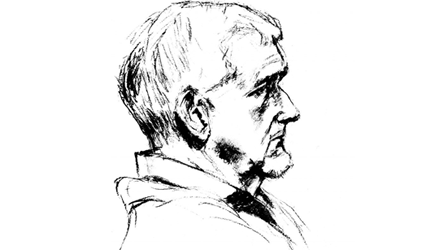Rivers have a special attraction in childhood, a different world from the hard land.
Most Suffolk rivers take a leisurely approach
feeling no rush to reach a restless sea,
they mardle, drifting on the gentle declines
of soft beds, slipping slowly past low banks.
These are rivers of low ambition, ripple-less,
almost uncertain which direction to flow.
At Redgrave a stream goes east, another west
as Waveney and Little Ouse drift to the coast.
The Linnet submits to The Lark at Bury
just a few miles after first rising to flow,
those two ditch rivers, forbidden to children,
sluggishly merged at Muggy’s meadow.
In wet winters both would flood the field
with shallow clear water just above grass,
still seen, as through glass, when it froze,
when we joyfully stamp crunched the ice.
Muggy’s old bull was the challenge in Summer
when crossing his field to fish The Half Moon,
for fierce Firecocks, who guarded their river bed —
but their red disappeared when they died in the jar.
Myth and memory merge by the river’s edge.
Dragonflies on bulrushes drying new wings
creatures of terror to explorers who feared
‘Death – if touched near your heart by their sting’.
Silent water voles dog-paddle to their holes,
a noisy moorhen builds her nest mid-stream,
a grass snake swims swiftly for the far bank;
in the still, shining river of childhood memory.
‘Mardle’ is a Suffolk word meaning to gossip
‘Firecock’ was a Suffolk name given to the male 3 spine stickleback in red flushed breeding condition.

